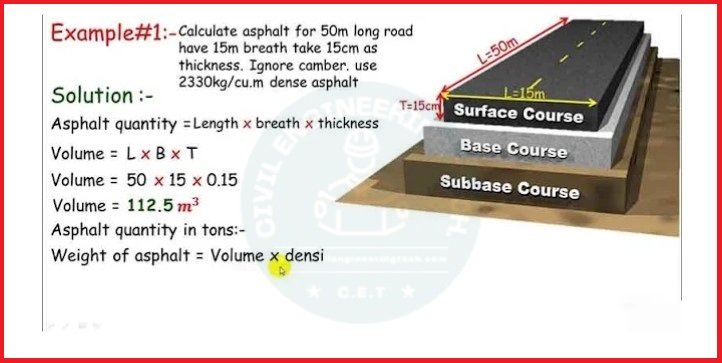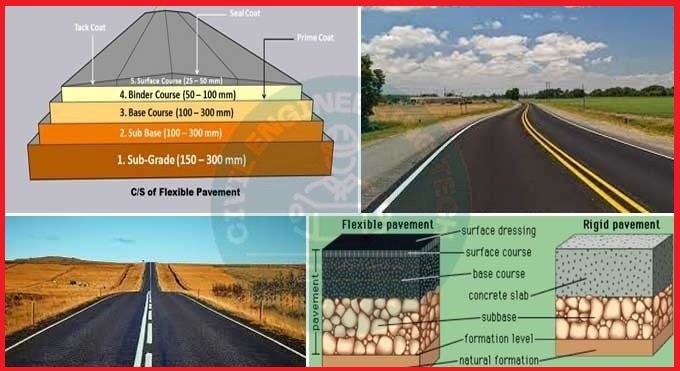Understanding the Responsibilities of Civil Engineers

Introduction to Civil Engineering
Civil engineering is one of the oldest and most fundamental branches of engineering, with roots tracing back to ancient civilizations. Over centuries, civil engineering has continuously evolved, adapting to new materials, techniques, and technologies. The primary aim of this field is to design, construct, and maintain the built environment, which includes everything from roads, bridges, and dams to airports, railways, and water treatment systems. Civil engineers are, therefore, pivotal in ensuring the functionality and safety of infrastructure crucial to everyday life.

The vast domain of civil engineering is categorized into several sub-disciplines, each specializing in different aspects of infrastructure development.
Structural Engineering focuses on the design and analysis of structures that support or resist loads, ensuring buildings and bridges can withstand various forces.
Environmental Engineering tackles issues related to water and air quality, waste management, and sustainable development, playing a central role in preserving our natural environment while accommodating human needs.
Transportation Engineering deals with the planning, design, and maintenance of transportation systems like highways, subways, and airports, aiming to enhance the efficiency and safety of travel and logistics.
Geotechnical Engineering involves the study of soil and rock mechanics, foundation design, and earthwork, ensuring that the ground can support the weight and demands of various infrastructure projects.
Civil engineers are indispensable in the modern world, contributing significantly to both urban and rural development. Their expertise ensures that infrastructure projects are not only functional and durable but also sustainable and environmentally friendly. By integrating advanced engineering principles and innovative solutions, civil engineers help in shaping the built environment that supports, protects, and enhances the quality of life for communities around the globe.
Planning and Design
Civil engineers play a pivotal role in the planning and design phases of various infrastructure projects. This process usually begins with comprehensive site investigations, where engineers meticulously study the proposed location’s geographical, geological, and environmental conditions. These investigations lay the foundation for conducting feasibility studies, which assess the technical, economic, and environmental viability of a proposed project. An essential part of this phase is evaluating whether the project can be effectively executed within planned budgets and timelines.
During the conceptualization of design solutions, civil engineers leverage advanced software tools such as AutoCAD, Civil 3D, and Revit. These tools enable precise modeling, simulation, and visualization of infrastructure projects, facilitating the development of efficient and innovative design solutions. By employing these technologies, engineers can optimize structures, mitigate potential risks, and ensure that designs meet or exceed required performance criteria.
A critical aspect of the planning and design phase involves adhering to local, state, and federal regulations. Civil engineers must ensure compliance with zoning laws, safety standards, and environmental guidelines to avoid legal complications and ensure public safety. This regulatory adherence is crucial for the successful approval and execution of projects.
Learn More
How to Calculate the Slope of the Stair
Foundation Backfilling types and Procedure
Direct Method of Linear Measurement In Surveying
Practical examples of civil engineering responsibilities in planning and design can be seen in various infrastructure projects. When designing a new bridge, engineers must consider factors such as load-bearing capacity, materials selection, and potential environmental impact. For highway construction, they must design road alignments, drainage systems, and ensure proper integration with existing road networks. Similarly, in the development of sewage systems, civil engineers are responsible for designing networks that efficiently manage wastewater and comply with environmental regulations.
Through meticulous planning and innovative design, civil engineers ensure the creation of robust, efficient, and sustainable infrastructure that meets the needs of society while adhering to stringent regulatory and safety standards.
Construction Management
Civil engineers play a pivotal role in construction management, ensuring that infrastructure projects are executed efficiently and effectively. This critical responsibility involves overseeing the entire construction process from inception to completion, aiming to deliver projects on time, within budget, and in alignment with design specifications. A civil engineer’s tasks are diverse, encapsulating coordination with contractors, managing labor forces, and stringent adherence to safety protocols.
One of the primary duties of a civil engineer in construction management is to supervise and direct the diverse teams working on-site. This involves coordinating with contractors and subcontractors, ensuring that each team understands their tasks and responsibilities. Effective communication and negotiation skills are essential, as civil engineers must resolve any issues that arise during the construction process, including design discrepancies and logistical challenges.
Budget management is another critical component. Civil engineers are tasked with monitoring project expenses and ensuring cost-effective use of resources. This requires meticulous planning, ongoing budget assessments, and adjusting project plans to avoid overspend while maintaining quality. Proper financial management safeguards the project’s profitability and sustainability.
Ensuring projects are completed within the stipulated timeline is another vital obligation. Civil engineers develop and implement detailed schedules, tracking progress against milestones and deadlines. They must be adept at identifying potential delays early and devising strategies to mitigate impacts, thus keeping the project on track. This may involve reallocating resources, adjusting workflows, or accelerating certain phases of construction.
Safety cannot be overstated in construction management. Civil engineers are responsible for enforcing strict compliance with safety regulations, mitigating risks through proper site analysis and preventive measures. They conduct regular safety inspections, ensure that workers adhere to safety protocols, and implement corrective actions swiftly when hazards are identified. This ensures the well-being of all personnel and the integrity of the construction site.
Learn More
Classification of Road Markings
What is Concrete Compaction factor test
How To Measurement of Horizontal Distance Using Auto Level
In summary, the role of a civil engineer in construction management is multifaceted and demanding. It requires a blend of leadership, precision, and strategic planning to successfully guide projects from concept to completion, ensuring all aspects of construction are executed to the highest standards.
Environmental Considerations
Environmental sustainability plays a vital role in the responsibilities of civil engineers. These professionals integrate environmental assessments and sustainability practices to ensure that their projects mitigate adverse environmental impacts. One of the principal aspects civil engineers focus on is pollution control. This involves implementing measures to reduce air, water, and soil pollution during both the construction and operational phases of their projects. By employing advanced techniques and innovative technologies, civil engineers work to protect the environment while delivering essential infrastructure.
Water resource management is another critical area where civil engineers apply sustainability practices. They design and implement systems that efficiently use, manage, and conserve water resources. This could include stormwater management systems, wastewater treatment processes, and sustainable urban drainage systems (SUDS). Effective water resource management not only supports environmental sustainability but also enhances the resilience of communities to climate change and extreme weather events.
Furthermore, the selection and use of sustainable materials are of paramount importance in modern civil engineering. Civil engineers prioritize materials that have minimal environmental footprint, are recyclable, or are sourced responsibly. Incorporating recycled materials, for instance, helps reduce waste and conserves natural resources. By choosing sustainable materials, civil engineers contribute to a reduction in greenhouse gas emissions, promoting a healthier environment.
Case studies provide concrete examples of how these concepts are applied in real-world projects. One notable example is the green building movement, which emphasizes energy efficiency, renewable energy integration, and sustainable material use. Projects such as the Bullitt Center in Seattle and the Bosco Vertical in Milan exemplify how civil engineering can align with environmental sustainability. These buildings not only minimize energy consumption but also integrate renewable energy sources such as solar panels and wind turbines.
In summary, civil engineers have a significant responsibility to incorporate environmental considerations into their projects. Through pollution control, water resource management, sustainable material use, and case studies on green building projects, it is evident that civil engineering not only shapes our built environment but also steers it towards a sustainable future.
Quality Assurance and Quality Control
Civil engineers bear significant responsibilities in ensuring the quality and reliability of infrastructure projects. One of the critical areas where civil engineers contribute is Quality Assurance (QA) and Quality Control (QC). This dual framework is indispensable for maintaining the integrity and safety of engineering projects. QA focuses on preventing defects by ensuring that engineering processes are adequately designed and followed, while QC involves the systematic inspection and testing of materials and workmanship to confirm that they meet predefined standards.
A fundamental duty of civil engineers in this regard is to develop comprehensive QA/QC plans. These plans serve as blueprints to uphold quality throughout the project’s lifecycle. They detail the quality standards expected, methods for achieving these standards, and procedures for testing and inspection. Among other elements, these plans outline specific protocols for material selection and usage, ensuring that only those materials that meet specified criteria are utilized.
Conducting rigorous inspections is another pivotal responsibility of civil engineers. Regular site inspections enable engineers to identify and rectify issues before they escalate. Such inspections encompass a range of activities, from verifying structural integrity to checking compliance with project specifications and safety regulations. Through these inspections, civil engineers can provide assurances that the construction processes are on track and meet the high standards required.
Quality materials are paramount in civil engineering projects, and civil engineers play a crucial role in ensuring material compliance with project requirements. Engineers must evaluate supplier credentials, test materials, and review certificates of conformity. By confirming that materials meet rigorous standards, engineers help avoid future structural failures and prolong the lifespan of infrastructure projects.
The role of certifications and continuous education in the realm of QA/QC cannot be understated. Certifications validate an engineer’s competence in current quality assurance standards and practices. Moreover, engaging in continuous education allows civil engineers to stay abreast of evolving technologies, standards, and best practices. This commitment to lifelong learning ensures that engineers can always implement the highest quality measures in their projects.
Risk Management and Safety
In the realm of civil engineering, managing risks and ensuring safety are paramount responsibilities that span the entire lifecycle of a project. Civil engineers are tasked with the critical role of identifying potential hazards, conducting thorough risk assessments, and implementing robust safety measures. Their goal is to mitigate risks associated with various aspects of a project, from conceptualization and design to construction and maintenance.
The identification of potential hazards is a fundamental step in the risk management process. Civil engineers must anticipate risks such as natural disasters, structural failures, and workplace accidents. To accomplish this, they utilize a combination of historical data, site analysis, and predictive modeling. For instance, in earthquake-prone regions, engineers assess the seismic activity and integrate earthquake-resistant designs into structures to minimize potential damage.
Conducting risk assessments involves a systematic examination of each identified risk to understand its likelihood and potential impact. Civil engineers employ various tools and methodologies, such as Failure Mode and Effects Analysis (FMEA) and fault tree analysis, to assess these risks comprehensively. This rigorous analysis enables them to prioritize risks and develop appropriate mitigation strategies.
The implementation of safety measures is an ongoing process that permeates all stages of a project. During the design phase, civil engineers incorporate safety features such as fire-resistant materials, redundancies in structural support, and advanced monitoring systems. During construction, they enforce strict safety protocols, conduct regular inspections, and ensure compliance with relevant safety standards and regulations.
Additionally, civil engineers play a pivotal role in developing emergency response plans. These plans are essential for minimizing the impact of unforeseen events, such as natural disasters or structural failures. By designing comprehensive evacuation procedures, coordinating with local authorities, and conducting simulations, engineers help ensure that response efforts are swift and effective in safeguarding lives and infrastructure.
Through their expertise in risk management and commitment to safety, civil engineers contribute significantly to the resilience and reliability of the built environment, protecting both people and property from potential hazards.
Innovation and Emerging Technologies
The field of civil engineering is one that incessantly adapts and evolves, driven by the imperative of innovation and integration of emerging technologies. The ongoing advancements in materials, construction methods, and design software have radically transformed the landscape of this domain, offering enhanced efficiency, sustainability, and resilience in infrastructure projects.
One of the significant breakthroughs in civil engineering is the development of advanced materials. High-performance concrete, self-healing materials, and fiber-reinforced polymers have revolutionized construction practices. These materials not only enhance the structural integrity and durability of buildings and infrastructures but also contribute to the environmental sustainability by minimizing waste and reducing resource consumption.
In terms of construction methods, modern techniques such as 3D printing and modular construction have become pivotal. 3D printing allows for precise, rapid, and cost-effective construction of complex structures, while modular construction facilitates the assembly of pre-fabricated components, significantly reducing construction timelines and labor requirements.
Moreover, design software has seen remarkable advancements, with Building Information Modeling (BIM) standing out as a game-changer. BIM enables the creation of detailed 3D models that provide comprehensive insights into the design, construction, and operational phases of a project. This integration ensures better coordination, minimizes errors, and optimizes project outcomes.
Learn More
Method Of Statement for Survey Works
Reinforcement Of The Isolated Footing
How To Calculate the Quantity Of Concrete Volume Of Staircase
Emerging technologies like drones and artificial intelligence (AI) are also making substantial inroads into civil engineering. Drones offer unparalleled capabilities in site surveying, monitoring, and inspections, providing high-resolution data that informs decision-making processes. On the other hand, AI, particularly in predictive maintenance, leverages data analytics to forecast potential infrastructure failures and maintenance needs, thus enhancing safety and operational efficiency.
Despite the promising opportunities, the integration of these technologies into civil engineering practices does pose challenges. There are concerns related to the initial investment costs, the need for upskilling the workforce, and ensuring the interoperability of various technological tools. Additionally, addressing data security and privacy issues is paramount as the reliance on digital solutions increases.
Overall, the embrace of innovation and emerging technologies signifies a progressive shift in civil engineering, promising to redefine the future of infrastructure development with smarter, safer, and more sustainable practices.
Ethics and Professionalism in Civil Engineering
Ethics and professionalism form the cornerstone of the civil engineering profession. Civil engineers are not only expected to possess technical expertise but also to uphold the highest standards of integrity and ethical conduct. Adherence to ethical codes, such as those established by professional bodies like the American Society of Civil Engineers (ASCE), is paramount in ensuring that civil engineers act in a manner that prioritizes public safety, welfare, and the environment.
Professional conduct encompasses various responsibilities, from ensuring the accuracy of engineering designs to maintaining transparency with clients and stakeholders. Civil engineers must commit to truthful representation of their qualifications, avoid conflicts of interest, and refrain from engaging in deceptive practices. Moreover, it is essential for civil engineers to report any instances of possible infrastructure hazards and engage in honest communication with the public, their peers, and regulatory bodies.
Numerous real-world examples highlight the importance of ethical behavior in civil engineering. For example, the collapse of the Hyatt Regency walkway in Kansas City in 1981 resulted in significant loss of life and sparked a nationwide examination of engineering ethics. The disaster underscored the lethal consequences of substandard ethical practices and emphasized the need for rigorous adherence to safety standards and thorough peer review processes in engineering projects.
Learn More
Deflection Angle in Surveying
What is Difference between Plinth Beam and Tie Beam
Bar bending schedule for footing
Conversely, instances of unethical behavior in civil engineering can lead to serious repercussions, including legal actions, loss of professional licenses, and irreparable damage to public trust. Ethical transgressions, such as cutting corners to reduce costs or manipulating safety data, not only endanger lives but also tarnish the reputation of the entire engineering community.
Finally, embracing lifelong learning and continuous professional development is critical to maintaining and advancing ethical standards in civil engineering. Civil engineers must stay updated on evolving ethical guidelines, new technologies, and best practices to ensure their work remains aligned with both ethical imperatives and professional excellence. By prioritizing education and ethical behavior, civil engineers can make substantial contributions to the well-being of society and the environment.






One Comment